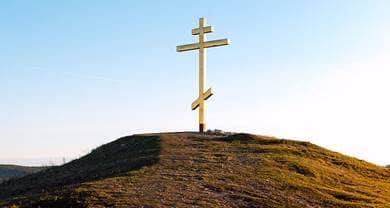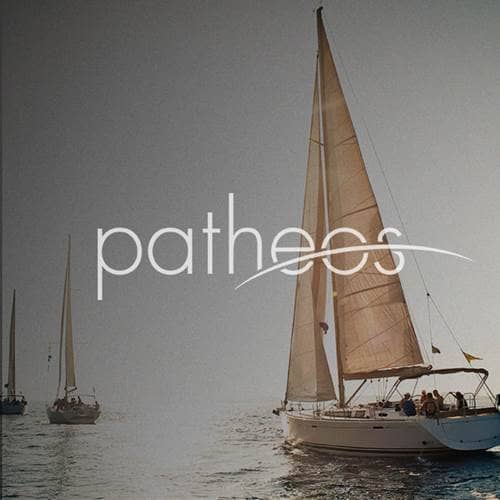- Trending:
- Pope Leo Xiv
- |
- Israel
- |
- Trump
- |
- Social Justice
- |
- Peace
- |
- Love

RELIGION LIBRARY
Eastern Orthodoxy
Missions and Expansion
The consolidation and spread of Christianity in both the east and the west both built on and shaped many political and cultural developments. This article discusses three events from this time that were of particular significance to Eastern Orthodoxy. During the 8th - 14th centuries, Eastern Orthodoxy developed its distinctive personality and spread to the north. The characteristic emphasis on mysticism in Eastern Orthodoxy acquired particular strength through the developing theologies of icons and mystical prayer.
Starting in the 9th century, Eastern Orthodoxy spread northward, initially due to the efforts of brother monks Cyril (c. 826-869) and Methodius (c. 815-884). Cyril and Methodius and their students translated the scriptures and liturgy into Slavonic, the language of the Slavs, developing an early version of the Cyrillic alphabet as part of the project. The Eastern Orthodox and Roman churches competed for the conversion of the Slavs, and because the Eastern Orthodox missionaries used the local languages, they had an advantage over the Roman Church, which insisted on the use of Latin. In addition, the Eastern Orthodox tradition allowed more independence to local churches than the Roman papacy did, an arrangement that appealed to Slavic kings.
This missionary effort successfully converted the leaders of Serbia (867-874), Bulgaria (927), and Russia (988). In 988, the Russian national church was founded at Kiev; it was relocated to Moscow in the 14th century. In 1448, the Russian church declared its independence from the patriarchate of Constantinople, and in 1453, the Church in Russia became autocephalous. The new status of the Russian Orthodox Church was provoked in part by the Ottoman conquest of Constantinople in the same year, resulting in the fall of the Byzantine Empire. With the loss of the Byzantine Emperor, Eastern Orthodoxy no longer had a champion. The Church needed a new protector, and that role fell to the Russian Tsar, or Caesar. Moscow was regarded as the "Third Rome." In 1589, the chief bishop in Moscow, the metropolitan, was raised to the status of Patriarch of Moscow, recognized as first in honor after the four ancient eastern patriarchates of Jerusalem, Antioch, Alexandria, and Constantinople.
One of the most recognizable features of Eastern Orthodox worship, the icon, generated controversy in the 8th and 9th centuries. From 726-843, the larger church community endured a clash between iconoclasts (literally, "icon smashers") and iconodules (literally, "icon venerators"). The iconoclasts were motivated by the prohibition of images made in the second of the Ten Commandments (Ex. 20:4). In their eyes, the icons implied idolatry. The iconodules countered that in the Incarnation, God legitimated icons. By becoming human, God gave us an image of the divine. God's presence can now be apprehended through the icon. Furthermore, the use of icons in the churches is not idolatry, because the icons are not worshipped. There is a difference, the iconodules pointed out, between veneration (dulia) and worship (latreia). The iconodules defined icons not as deities, but as agents of grace, or points of encounter between eternal time and ordinary time. When Christians are in the presence of icons, they are in communion with, or mystically united with, the personality or story depicted by the icon. Icons are windows opened onto heaven.
In 787, the Second Council of Nicaea agreed with the iconodules, decreeing that it is legitimate to paint icons, bring them into the churches, and venerate them. However, the controversy persisted until 843, when the iconodules prevailed once and for all through the intervention of the Byzantine Empress, Theodora. This is called the "Triumph of Orthodoxy," and is celebrated at a special service called "Orthodoxy Sunday," which falls on the first Sunday in Lent.
Orthodox mysticism also crystallized around a belief in the experience of the Divine Light, a concept that gained influence through the writing of St. Symeon the New Theologian (949-1022). In Eastern Orthodox tradition, following Symeon and others, the ultimate mystical experience is a vision of the "Divine and Uncreated Light." This is the same vision the Bible describes in the story of the Transfiguration, which appears in all three synoptic gospels. According to the story, while accompanied by Peter, James, and John, Jesus was transformed by a radiant light, spoke with Moses and Elijah, and was called "Son" by God. Legend holds that the Transfiguration occurred on Mt. Tabor, hence the Divine Light is also called the Light of Tabor. It is called "Uncreated Light" because it is a manifestation of God, who is uncreated.
A spiritual discipline called hesychasm formed around the pursuit of the vision of Divine Light. Hesychia means "inner stillness." The hope is that perfect stillness will open the Christian to the experience of Divine Light. The hesychasts devoted themselves to achieving a prayer of silence, meaning prayers without images, words, or thoughts. Hesychasts employed physical exercises such as sitting and breathing rhythmically in order to integrate prayer, such as the Jesus Prayer ("Lord Jesus Christ, Son of God, have mercy on me, a sinner"), into their bodies and consciousness. The goal was to integrate the prayer into the very being of the Christian, so that it would pray itself when the heart of the hesychast beat, or the lungs drew breath. This would be the Christian's response to Paul's admonition to "pray continually" (1 Thess. 5:17). Hesychasm plays a significant role in modern Orthodox spirituality.
Study Questions:
1. Why was Eastern Orthodoxy able to spread northward in the 9th century? Who were the key converts within its missionizing?
2. How do iconoclasts differ from iconodules? Which did the Second Council of Nicea favor, and what was the end result?
3. Where does Eastern Orthodoxy’s mysticism draw its inspiration? How is it still relevant today?










